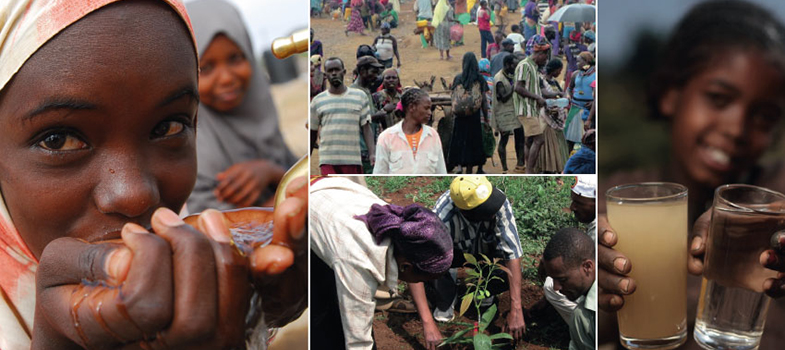12.1 Sanitation and waste management in schools
In Study Session 2, you learned about the effects of poor sanitation and waste management. List some of the potential impacts on schools.
The possible answers include health problems, impacts on attendance (especially for girls) and achievement, and pollution of the school environment.
Poor school sanitation and waste management create many problems:
- Many school children, teachers and school administration staff are exposed to increased health risks.
- The children’s ability to learn may be affected by helminth infections which impair their physical and cognitive development. Diarrhoeal diseases and helminth infections force many school children to be absent from school.
- Girls are likely to be affected by lack of adequate facilities for menstrual hygiene which can contribute to them missing days at school or even to drop out.
- If school latrines are not accessible to girls and boys with disabilities, they may not eat or drink all day to avoid needing the latrine.
Conversely good sanitation and waste management in schools means that:
- The children are more able to integrate hygiene promotion into their daily lives and can be effective messengers and agents for change in their families and the wider community.
- The proper behaviours that children learn at school are skills that they are likely to maintain as adults and pass on to their own children.
You have been a school student at some time in the past. What were the components of school health services in your time?
You might have various memories of events. Your classroom teacher might have checked your personal hygiene. You might have learned about the common bacterial eye infection trachoma and face-washing in science class. You were probably reminded to use the latrine properly and to wash your hands afterwards.
In Ethiopia, many schools do not have water supply or latrines at all, or if they do, they may not have handwashing facilities. Even in schools that do have facilities, these are frequently not maintained or kept clean, or may be kept locked. To give guidance on how to improve this situation, a design manual has been published jointly by the Ministry of Health, Ministry of Education and Ministry of Water and Energy in collaboration with UNICEF (MoH et al, 2012). The manual gives recommendations for safe water supply in schools and the volume of water that should be available per person per day. It also establishes the principles for sanitation and hygiene provision in schools, which are outlined in the following sections.
Learning Outcomes for Study Session 12
